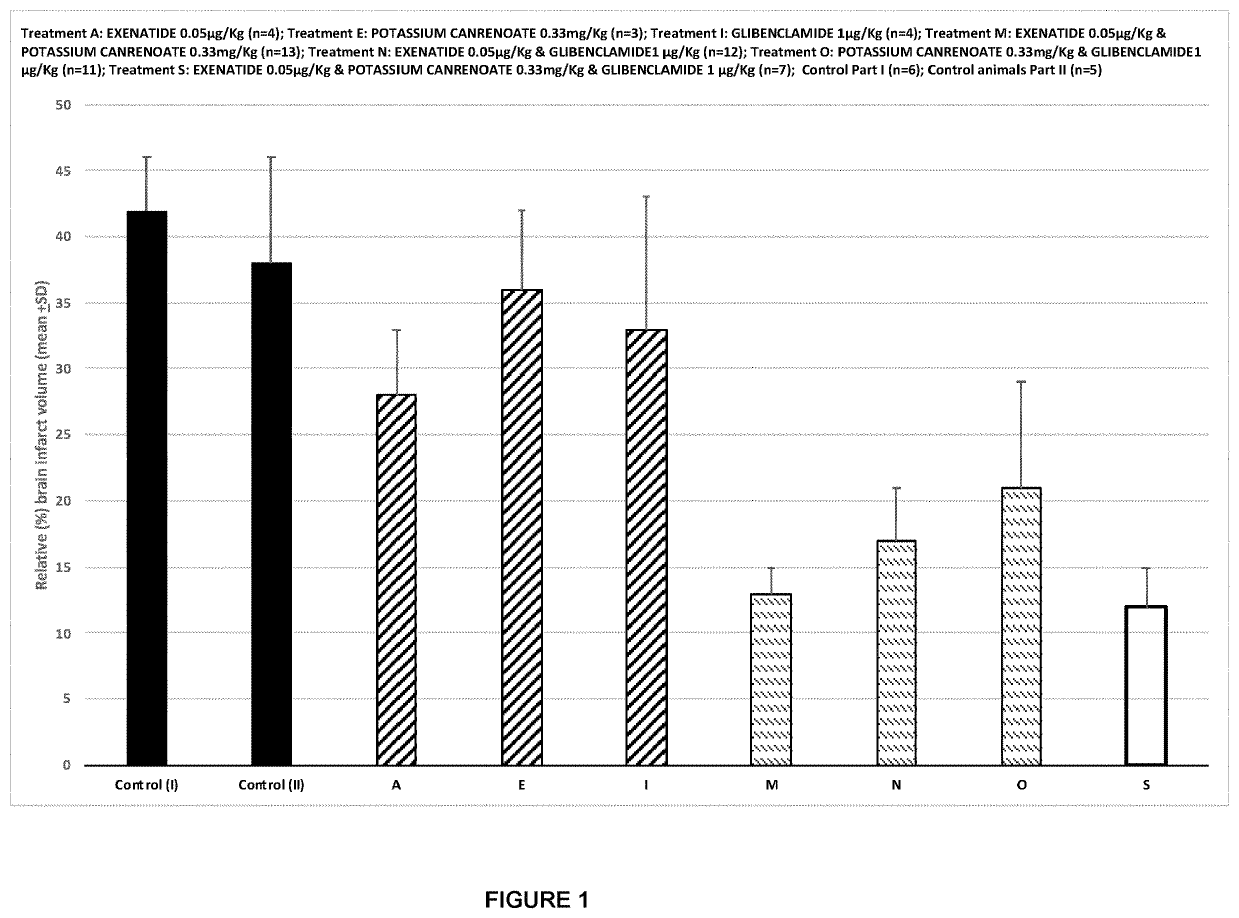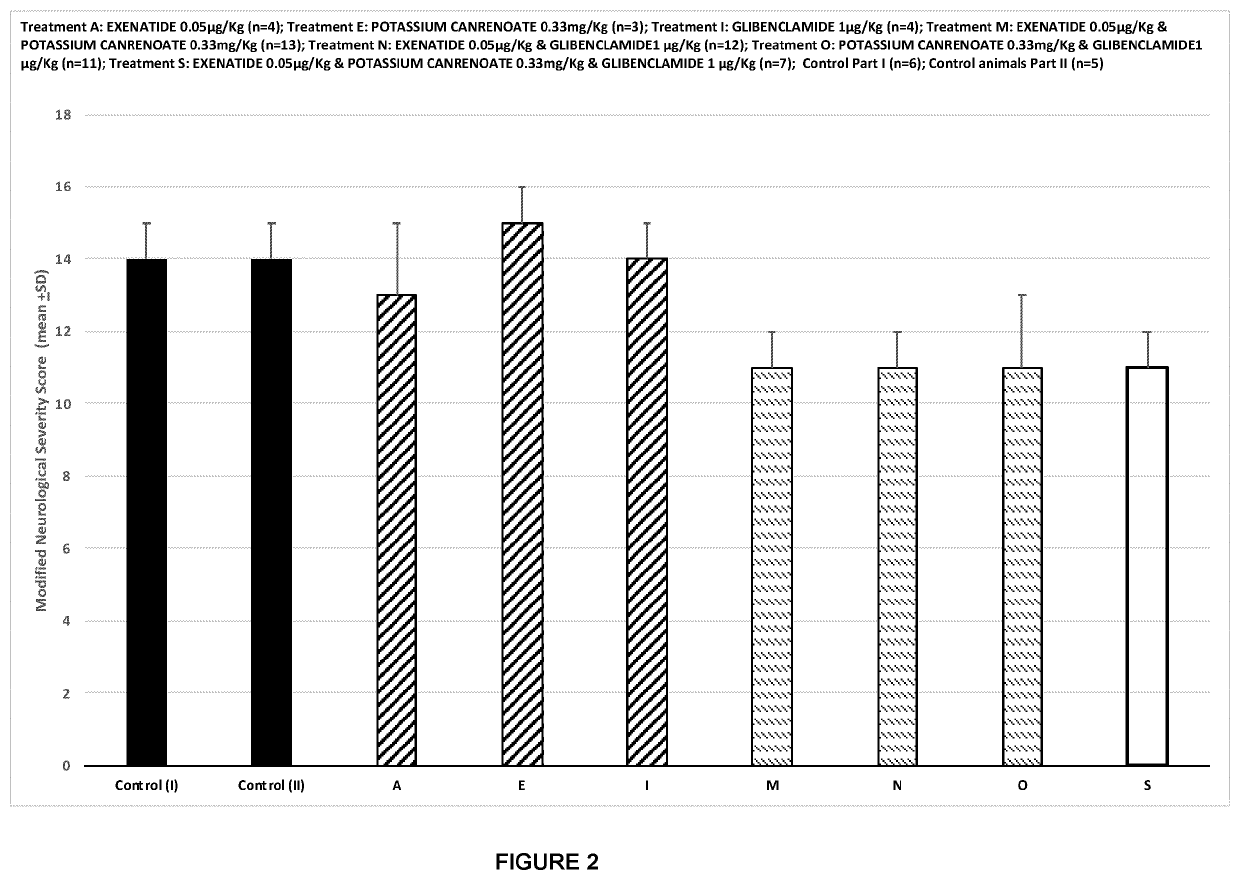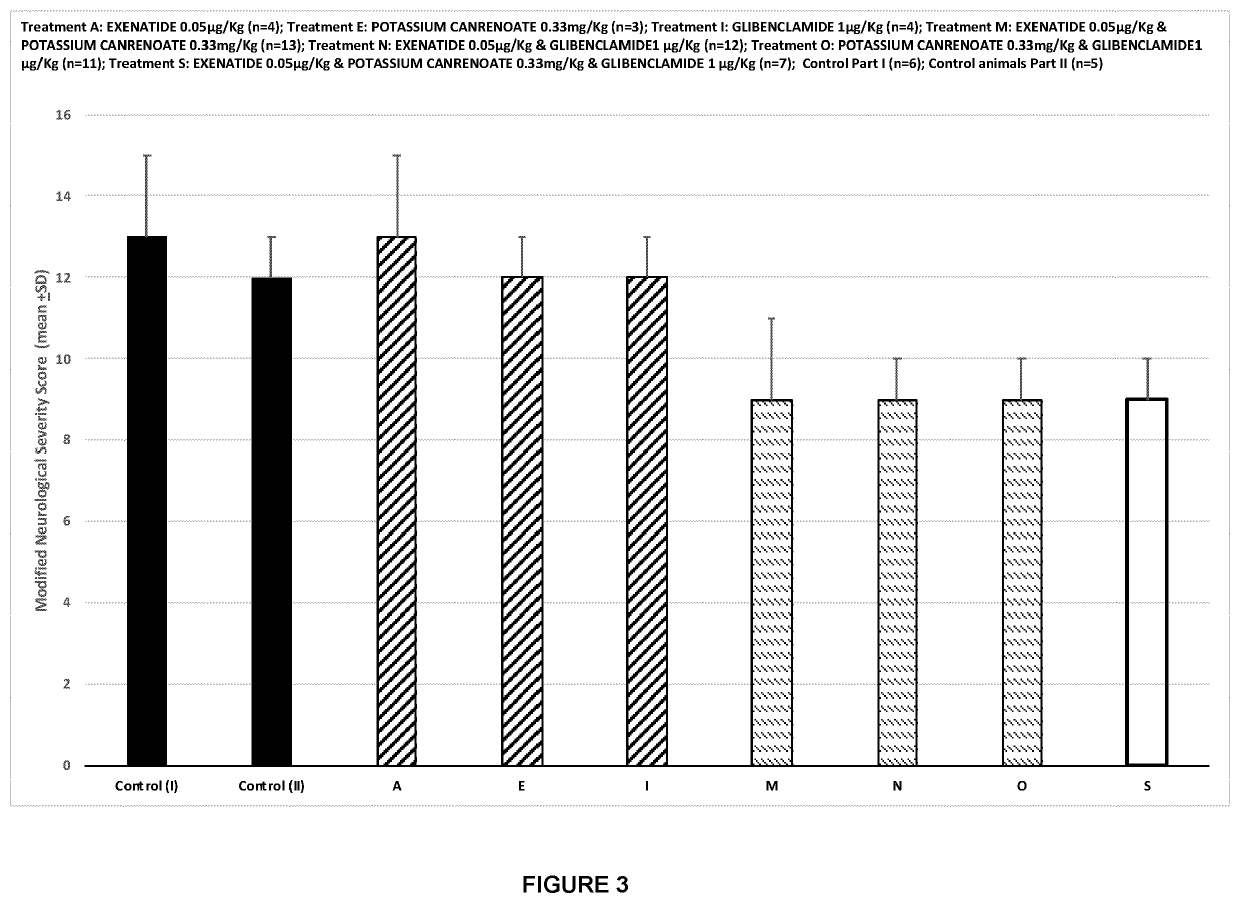Combination
a technology of conjugation and peptide, applied in the field of conjugation, can solve the problems of insufficient effectiveness, insufficient implementation or insufficient implementation of primary prevention strategies, and inability to achieve widespread implementation or use of primary prevention strategies
- Summary
- Abstract
- Description
- Claims
- Application Information
AI Technical Summary
Benefits of technology
Problems solved by technology
Method used
Image
Examples
example 1
onse Study of the Efficacy of Exenatide, Potassium Canrenoate and Glibenclamide and their Combinations in a Rat Model of Cerebral Ischemia and Reperfusion Injury
[0420]The aim of this study was to assess (a) the dose-response of the neuroprotective effect of glibenclamide, exenatide, and potassium canrenoate in a rat model of cerebral ischemia and reperfusion injury following repeated intravenous administration as monotherapies (Study Part I) and (b) the effect of a combination of the compounds vs the corresponding monotherapies (Study Part II).
[0421]The transient middle artery occlusion (t-MCAO) was performed according to the method described by R. Schmid-Elsaesser et al. (Stroke. 1998; 29(10): 2162-70). Test compounds were administrated intravenously 20 minutes before reperfusion and then twice a day thereafter for six consecutive days. The modified neurological severity score (NSS) was graded on a scale of 0 to 18 (in which normal score was 0 and maximal deficit score was represen...
example 2
the Efficacy of Exenatide, Potassium Canrenoate and Glibenclamide Combination in a Rat Model of Vascular Dementia
[0435]Chronic cerebral hypoperfusion model in Wistar rat causes cerebral lesions in the rat brain by permanent occlusion of both common carotid arteries which can also affect cognitive functional deficit. This model is similar to that of Vascular Dementia and the technique can decrease the blood flow in the cerebral cortex and hippocampus by up to 40-80% for several months, which induces certain learning disorders.
Study Objective
[0436]The purpose of the study was to evaluate the neuroprotective efficacy of a combination of exenatide, potassium canrenoate and glibenclamide, given intravenously 24 h after both common carotid arteries permanent ligation and then administered twice daily for three weeks, using the Wistar rat Vascular Dementia model.
Treatment Groups
[0437]Treatment Groups were follows:
Group 1M: Vehicle treated controls (9 animals, intravenous administration);
Gr...
PUM
| Property | Measurement | Unit |
|---|---|---|
| Dimensionless property | aaaaa | aaaaa |
| Dimensionless property | aaaaa | aaaaa |
| Dimensionless property | aaaaa | aaaaa |
Abstract
Description
Claims
Application Information
 Login to View More
Login to View More - R&D Engineer
- R&D Manager
- IP Professional
- Industry Leading Data Capabilities
- Powerful AI technology
- Patent DNA Extraction
Browse by: Latest US Patents, China's latest patents, Technical Efficacy Thesaurus, Application Domain, Technology Topic, Popular Technical Reports.
© 2024 PatSnap. All rights reserved.Legal|Privacy policy|Modern Slavery Act Transparency Statement|Sitemap|About US| Contact US: help@patsnap.com










